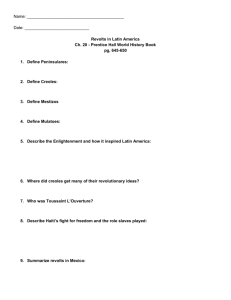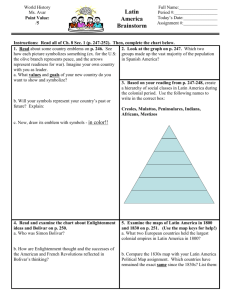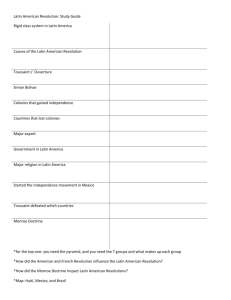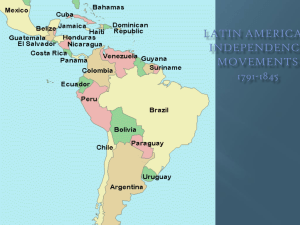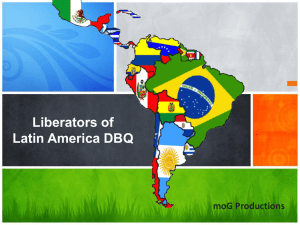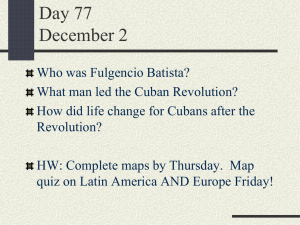Lesson Five – What happened in Latin America?
advertisement
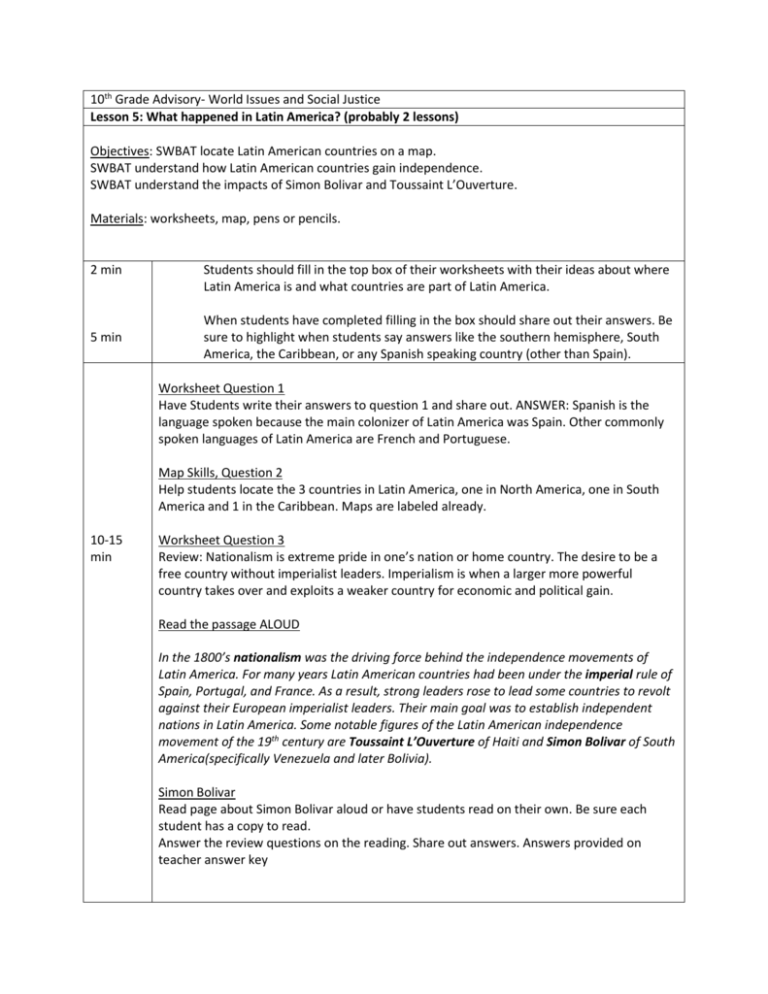
10th Grade Advisory- World Issues and Social Justice Lesson 5: What happened in Latin America? (probably 2 lessons) Objectives: SWBAT locate Latin American countries on a map. SWBAT understand how Latin American countries gain independence. SWBAT understand the impacts of Simon Bolivar and Toussaint L’Ouverture. Materials: worksheets, map, pens or pencils. 2 min 5 min Students should fill in the top box of their worksheets with their ideas about where Latin America is and what countries are part of Latin America. When students have completed filling in the box should share out their answers. Be sure to highlight when students say answers like the southern hemisphere, South America, the Caribbean, or any Spanish speaking country (other than Spain). Worksheet Question 1 Have Students write their answers to question 1 and share out. ANSWER: Spanish is the language spoken because the main colonizer of Latin America was Spain. Other commonly spoken languages of Latin America are French and Portuguese. Map Skills, Question 2 Help students locate the 3 countries in Latin America, one in North America, one in South America and 1 in the Caribbean. Maps are labeled already. 10-15 min Worksheet Question 3 Review: Nationalism is extreme pride in one’s nation or home country. The desire to be a free country without imperialist leaders. Imperialism is when a larger more powerful country takes over and exploits a weaker country for economic and political gain. Read the passage ALOUD In the 1800’s nationalism was the driving force behind the independence movements of Latin America. For many years Latin American countries had been under the imperial rule of Spain, Portugal, and France. As a result, strong leaders rose to lead some countries to revolt against their European imperialist leaders. Their main goal was to establish independent nations in Latin America. Some notable figures of the Latin American independence movement of the 19th century are Toussaint L’Ouverture of Haiti and Simon Bolivar of South America(specifically Venezuela and later Bolivia). Simon Bolivar Read page about Simon Bolivar aloud or have students read on their own. Be sure each student has a copy to read. Answer the review questions on the reading. Share out answers. Answers provided on teacher answer key Toussaint L’Ouverture Read page about Toussaint L’Ouverture aloud or have students read on their own. Be sure each student has a copy to read. Answer the review questions on the reading. Share out answers. Answers provided on the teacher answer key. Extension Activity There are Regent’s Practice questions with answers and explanations. You may modify them and as needed. following class
